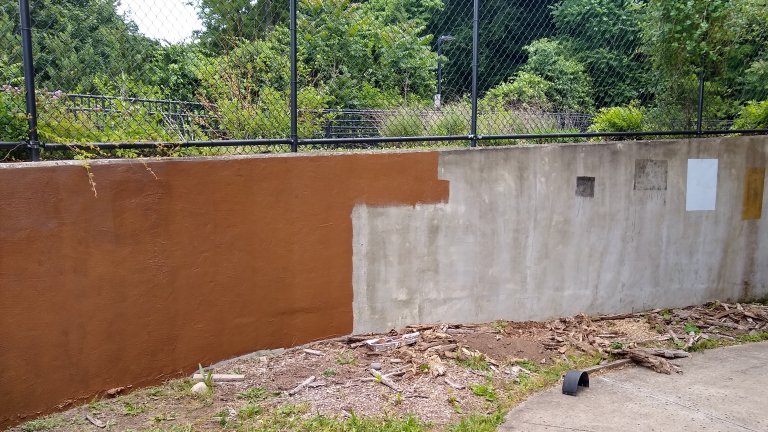
School Context: Bishop Woods is a K-8, Title 1 public magnet school located in New Haven, CT, with an architecture and design theme. Although traditionally a neighborhood school located outside the city center, the school transitioned to magnet status in 2016. The school was designated a Magnet Schools of America School of Excellence in 2020. Through partnerships with local organizations, Bishop Woods is able to enhance programming for students - through integrated units of study, additional programming that enhances the school magnet theme, wrap around social emotional services, and after school programming. Approximately one third of graduating students attend a New Haven magnet school, one third a neighborhood school, and one third a regional technical high school.
Curricular Context: K-8, All grade levels, interdisciplinary
Overarching Goal: By developing a science-based mural in the schoolyard habitat at Bishop Woods:
- Students will become more connected to the spaces and develop ownership and stewardship of the school grounds and will work to make a lasting impact on the learning environment of a school.
- School staff will build individual capacity and increase teaching and learning opportunities outdoors.
- Families will build understanding of the important connection between science and outdoor learning at Bishop Woods.
Environment
Bishop Woods is a K-8 magnet school located in New Haven, CT, with an architecture and design theme. The school property has a large amount of outdoor space and backs onto a bird sanctuary. Its physical assets include its geology, existing garden and habitat space, being next door to a bird sanctuary, outdoor seating and tables, proximity to the Quinnipiac Salt Marsh,and rainwater. Social assets include a strong outdoor team, inter-grade student cohort groups, well-developed magnet-theme connections, the availability of woodworking tools, and a strong relationship with Common Ground, a community partner and supporter of outdoor learning at the school.
Challenges include lack of accountability for project completion and lack of retention of scientific knowledge from one year to the next.
Unused space on the school property was seen as both an asset and a challenge as we developed this project.
We hope that this project would help students become more connected to the outdoor spaces at the school and develop ownership and stewardship of the school grounds, as well as organizing and displaying important scientific learning gained throughout the years at Bishop Woods.
Additional Resources: Bishop Woods Mapping Tool
Expectations
Guiding Questions:
- What allows our schoolyard habit to flourish and remain healthy?
- How can scientific principles help us determine ways to improve and grow our habitat?
- How can we use the outdoor space to enhance overall learning at Bishop Woods?
- How can our physical environment reflect our scientific understanding of the cycles in nature?
In 8th grade, we focus on applying the design cycle to create and evaluate ideas to be displayed in the mural.
Science:
- K-PS3-1. Make observations to determine the effect of sunlight on Earth’s surface. [Clarification Statement: Examples of Earth’s surface could include sand, soil, rocks, and water]
- 1-PS4-3. Plan and conduct an investigation to determine the effect of placing objects made with different materials in the path of a beam of light. [Clarification Statement: Examples of materials could include those that are transparent (such as clear plastic), translucent (such as wax paper), opaque (such as cardboard), and reflective (such as a mirror).] [Assessment Boundary: Assessment does not include the speed of light.]
- 1-LS1-1. Use materials to design a solution to a human problem by mimicking how plants and/or animals use their external parts to help them survive, grow, and meet their needs. [Clarification Statement: Examples of human problems that can be solved by mimicking plant or animal solutions could include designing clothing or equipment to protect bicyclists by mimicking turtle shells, acorn shells, and animal scales; stabilizing structures by mimicking animal tails and roots on plants; keeping out intruders by mimicking thorns on branches and animal quills; and, detecting intruders by mimicking eyes and ears.]
- 1-ESS1-2. Make observations at different times of year to relate the amount of daylight to the time of year. [Clarification Statement: Emphasis is on relative comparisons of the amount of daylight in the winter to the amount in the spring or fall.]
- 2-ESS2-1. Compare multiple solutions designed to slow or prevent wind or water from changing the shape of the land. [Clarification Statement: Examples of solutions could include different designs of dikes and windbreaks to hold back wind and water, and different designs for using shrubs, grass, and trees to hold back the land.]
- 3-LS4-3. Construct an argument with evidence that in a particular habitat some organisms can survive well, some survive less well, and some cannot survive at all. [Clarification Statement: Examples of evidence could include needs and characteristics of the organisms and habitats involved. The organisms and their habitat make up a system in which the parts depend on each other.]
Students will use skills developed in Math, Language Arts, and Science to develop, document, analyze, and communicate their design ideas visually and orally to an audience of their peers using a CLAIM, EVIDENCE, REASONING format whenever possible.
Additional resources: NGSS, NGSS StandardsPEsK5, NGSS by DCI, SS Guiding Principles, CT SS Framework, Nat’l C3 SS Framework, Common Core, ISTE Technology Standards for Students, Learning for Justice Social Justice Standards, CASEL SEL Framework
Exhibition
The Science of Our Habitat Mural
- Individual projects - Students will use the design process (ask, imagine, plan, create, and improve) to design a portion of the mural panel dedicated to their grade levels (examples below).
- Culminating event - MURAL PANEL PRESENTATIONS
- Audience - K, 1, 2, 3, 7, 8
- Impact of student involvement:
- Students will:
- Use the design process to develop a model to illustrate a scientific principle that is at work in our habitat.
- Discuss with mural artists to get feedback about their DESIGN PLAN.
- Present their DESIGN PLAN to 4th, 5th, or 6th Grade students to share their gained knowledge and encourage future student involvement in developing the schoolyard habitat.
- 6 As
- Academic rigor - students think like scientists to create, evaluate, and improve their designs.
- Adult connections
- Authenticity - connected to the schoolyard habitat.
- Applied learning - students use modeling to illustrate a learned scientific concept and transform it into something that would be appropriate in the mural.
- Active exploration - exploration of the habitat to find ways that exemplify important scientific principles.
- Assessment - students present their mural ideas to artists that will actually draw and paint their mural.
- Students will:
Additional Resources:
Examples of directions for projects:
- Kindergarten Objective - SUNLIGHT is necessary for growing plants.

- First Grade Objective - Animals use external parts to help them survive.

Experience
Weeks 1 & 2 (Fridays Only): The importance of SUNLIGHT. 8th graders will meet with Kindergartens to teach lessons about sunlight.
- Kindergarten students will learn to associate the sun with light and warmth. They will fill cups with soil, water and rocks and place them in the sun and shade for a while. By finding out how they can tell where a cup has been stored, they will learn how the sun affects Earth's surface.
- 8th Graders and Kindergarten students will collaborate to create a drawing that helps capture their learning. 8th Graders will ensure that appropriate labels are added to the illustrated model.
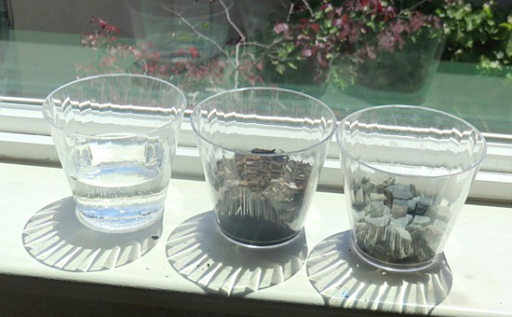
Weeks 3 & 4 (Tuesdays Only): How much worm is a worm? 7th Graders will meet with 1st graders to organize and conduct an experiment to learn about how worms can use REGENERATION to survive.
- Students will cut worms in different places and in different sized pieces to find out if there is a relationship between regeneration and size or orientation of the body.
- 1st Grade students will select important aspects of their learning and work with the 7th Graders to bring their ideas to life in a labeled drawing.
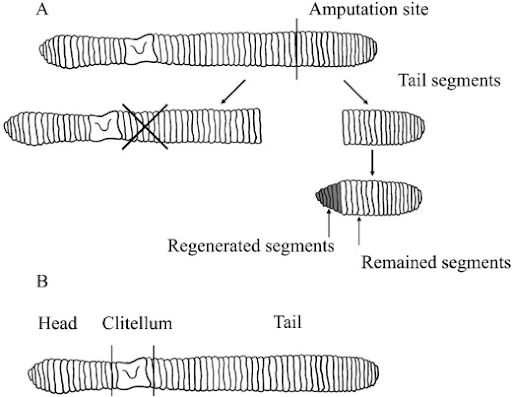
Weeks 5 & 6 (Fridays Only): What is EROSION? Why is it important to prevent? 8th Graders will work with 2nd graders to experiment with a stream table to observe how water erodes soil and sand.
- The students will co-learn the engineering design process and the erosion process. The engineering design process will be taught in small groups to formulate ideas on how to stop erosion and why this might be important.
- 2nd graders will select important aspects of their learning and work with the 8th Graders to bring their ideas to life in a labeled drawing.
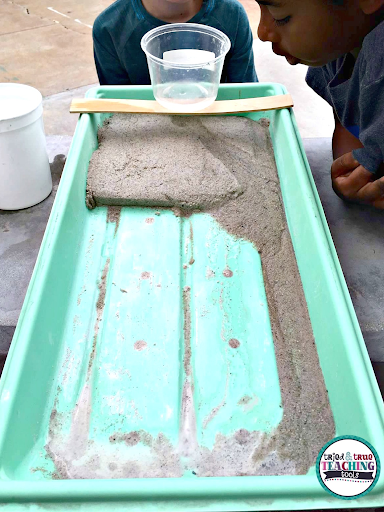
Weeks 7 & 8 (Tuesdays Only): What does it mean that some animals are cold-blooded? Does the temperature of our bodies change when we are cold? How is animal behavior altered by temperature? 7th Graders will work with 3rd graders to examine how an environment can influence animal behavior.
- The students will conduct an experiment using garden snails that have been chilled in the refrigerator to determine if they move slower when they are cold. 7th grade students will use infrared thermometers to track the temperature of the snails and draw connections to their behavior.
- 3rd graders will select important aspects of their learning and work with the 7th Graders to bring their ideas to life in a labeled drawing.

Week 9: Consultation with the Mural Artists. Mixed groups of students will present their illustrated models/drawings to a mural artist to discuss how the artists can extrapolate their work into the larger mural.
The goal is to turn the blank wall into a sectioned mural displaying discrete scientific principles.
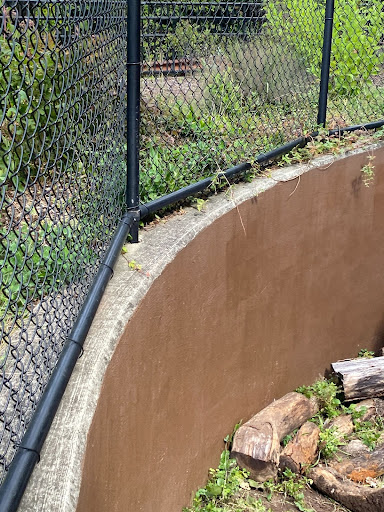 --->
---> 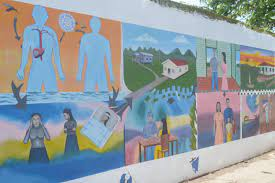
Some texts/tools that we used were:
Anchoring Text: The Street Beneath My Feet
Some community programs that we used were:
Regional Water Authority - Project Water
